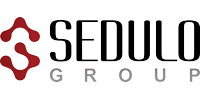Part Four of RAMP UP: A Competitive Intelligence Framework for Strategic Advantage
- Competing Products – Best Practices for Analysis and Action Starts with RIVALS
- Customer Insights That Drive Strategy: AVENUES Leads to Results
- Market Trends Analysis: A Proven Method to Outpace Competitors
- Growth Strategy: How to Convert Potential into Performance
- Strategic Planning Process: How to Build Alignment Across Teams
Strategic analysis separates observation from direction. At Sedulo, we don’t stop at uncovering insights—we build the path forward. Our proprietary RAMP UP framework, developed over two decades of client engagements, is designed to move organizations from research to execution. This post focuses on the fourth phase: Potential.
This is where insight becomes action with an effective growth strategy.
RAMP UP is Sedulo’s proprietary research and strategic analysis framework. It brings structure, discipline, and clarity to conducting competitor, customer, and market research. RAMP UP is a system for transforming raw data into actionable strategy through a collaborative workshop that aligns stakeholders and accelerates decision-making. RAMP UP is built to answer a critical question: How can organizations make faster, smarter, and more aligned strategic decisions when change is constant and accelerating?
Potential is where you step back and ask, ‘What now?’
You’ve already gathered intelligence on competitors (Rivals), customers (Avenues), and market dynamics (Market Shifts). Now it’s time to convert this detail into a powerful growth strategy. Potential helps you:
- Identify growth opportunities with real upside
- Spot emerging threats early enough to act
- Prioritize initiatives with confidence
- Align teams around a clear strategic direction
It’s a critical inflection point—this is where insights become strategy
Move Your Business Growth Strategies from Insight to Action in Four Stages
The Potential phase follows four distinct tracks:
- Opportunity Identification
- Opportunity Analysis
- Growth Strategy Development
- Go-to-Market Strategy Planning

Each step builds on the information you’ve already gathered. You’ll use a structured approach to move from data to direction—what to pursue, what to avoid, and how to act.

Identify Growth Opportunities
Begin by identifying where real growth opportunities exist in your market. Use three methods to surface promising areas:
Whitespace Analysis
Look for unmet needs that customers are solving on their own. These gaps often reveal the highest-potential opportunities. Explore behavioral data, direct interviews, and early signals of future demand. Use tools like What’s After Next to go beyond the obvious.
Value Chain Opportunity Mapping
Evaluate your full value chain—from suppliers to delivery—and identify inefficiencies or friction points. Compare against competitors and industry norms. Opportunities often emerge from what others overlook.
Category Redefinition
Ask whether your market is shifting. Are adjacent categories merging? Are customers changing how they define value? Rethinking market boundaries can uncover entirely new growth paths.
Once you’ve completed these steps, consolidate your insights into a list of actionable growth opportunities. Prioritize them based on urgency, scalability, and alignment with your long-term goals.

Evaluate and Prioritize Opportunities
Not every opportunity is worth pursuing. A feasibility analysis helps you focus on the ones with the highest likelihood of success. Examine four critical areas:
Market Feasibility
Validate demand. Break down market size, customer segments, pain points, and adoption potential. Create a clear opportunity brief to support your case.
Technical Feasibility
Can you deliver the solution? Map your current capabilities and resources. Identify whether to build, buy, or partner. Document capability gaps and outline delivery options.
Commercial Feasibility
Do you know if customers will be willing to pay for it? Test pricing models, channel strategies, and GTM potential. Use benchmarks and elasticity studies to support your assumptions.
Barriers to Entry
What could slow you down? Identify regulatory hurdles, IP conflicts, and operational risks. Build a matrix of potential roadblocks and how you’ll address them.
At the end of this phase, you’ll have a feasibility summary to guide prioritization and gain alignment across your leadership team.

Define Your Growth Strategy
With viable opportunities in hand, choose the best way to pursue them. Use the Ansoff Matrix to determine which strategic posture fits your situation:
- Market Penetration: Sell more of what you already have to your current customers
- Market Expansion: Bring existing products into new markets
- Product Innovation: Build new offerings for your current customers
- Diversification: Enter new markets with new products
Each option carries a different risk profile. Use scenario planning and financial modeling to weigh trade-offs and build buy-in before committing to a path.

Build Your GTM Execution Plan
Execution is where many strategies stall. Use this phase to select the right model and build a plan your team can deliver.
Build-Buy-Partner Analysis
Decide how to bring the opportunity to market. Use a structured decision matrix to assess internal development, mergers and acquisitions (M&A), or partnerships based on time, cost, and capability fit.
Alliance & GTM Planning
If partnerships are the right path, define the model. Clarify roles, shared goals, governance, and performance metrics to ensure alignment and effectiveness. Build a GTM roadmap that aligns messaging, sales enablement, and campaign planning.
Organic vs Inorganic Growth
Compare the impact of growing internally versus acquiring new capabilities. Analyze cost, speed, risk, and integration complexity. Build a comparative business case to support your recommendation.
Business Case Development
Pull it all together in a structured plan. Build a clear case that outlines opportunity size, investment needs, ROI projections, risks, and timelines. Use it to drive internal alignment and secure funding.
Strengthen Your Growth Strategy by Addressing Threats
Growth strategy isn’t just about offense. A strong plan also considers what could go wrong and how you’ll respond.
Threat analysis in the Potential phase includes:
- Vulnerability Mapping
- Threat Prioritization
- Scenario Planning
Map Vulnerabilities
Start by assessing where you’re most exposed:
Capability Gaps
Evaluate whether your internal systems, talent, and processes can support your goals or if they’re holding you back.
Dependency Risks
Identify overreliance on specific partners, suppliers, or technologies. Map how disruption in one area could ripple through your business.
Threat Alignment
Connect your vulnerabilities with known external threats. Where they overlap, take immediate action.
This mapping exercise creates a diagnostic you can use to prioritize mitigation efforts and protect against disruption.
Prioritize Threats
Not all threats deserve equal attention. Use structured tools to assess which ones are real and which are noise:
Threat Indicator Analysis (TIA)
Score and benchmark competitor behavior to detect strategic shifts early.
Threat Matrix
Plot each threat by impact and probability. Use this to focus on what matters.
Strategic Threat & Response Matrix (STARM)
Link threats to asset-level responses. Identify both defensive and counterattack strategies to protect your position.
By the end of this process, you’ll have a prioritized threat list and a strategic response plan, rather than a reactive one.
Build Your Strategic Risk Playbook
Now, plan for what might happen.
Scenario Modeling
Create realistic “what-if” scenarios based on likely threats. Use them to test your strategy and pressure-test your operations.
Contingency Planning
Build response plans that define decision triggers, escalation paths, and resource allocation. Ensure your team is prepared to act.
Long-Term Mitigation
Identify where you can reduce risk altogether: diversify suppliers, invest in automation, or build new capabilities that make you harder to disrupt.
At the end of this phase, you’ll have a documented, adaptable risk playbook built on research, not assumptions.
Why Potential is Essential for Growth Strategy Success
Potential gives you the structure to make better decisions. It doesn’t just highlight what’s possible—it defines what’s actionable.
Every team benefits:
- Product identifies real customer needs and validates feature investments
- Marketing refines positioning and targets whitespace
- Sales uncovers demand signals and new segments
- Leadership gets aligned, confident strategy direction
Potential ensures your insights translate into clear growth plans—and prepares your business to defend its position.
Potential and Growth Strategy by Industry
No two sectors operate the same. Here’s how you might apply this phase differently depending on your environment:
Technology
- Accelerate product roadmaps with customer-driven insights.
- Identify emerging threats using usage and churn data
- Focus R&D on validated demand
A global enterprise software company identified unmet needs among mid-market IT teams. By combining whitespace analysis with feasibility modeling, the team identified a gap in AI-powered workflow integrations—the result was a validated roadmap for a new feature set and a 12-month competitive lead.
Consumer Goods
- Track shifting consumer behavior and unmet needs
- Optimize pricing, promotion, and positioning by channel
- Find underserved segments before your competitors do. A North American CPG firm struggling with stagnant growth used this consumer journey and competitor insight process to identify gaps in brand relevance among Gen Z buyers. Using trend analysis and category redefinition, the company launched a refreshed product line and GTM strategy that grew shelf space by 18%.
Manufacturing
- Improve operational efficiency with value chain insights
- Validate significant investments with market forecasts
- Plan market entry with local demand and regulatory clarity. A precision equipment manufacturer needed to break into a higher-margin adjacent segment. By combining value chain analysis and scenario planning, the team validated technical feasibility. It mapped a strategic pivot—the outcome being a retooled product strategy that unlocked a new $150 million market segment.
Professional Services
- Differentiate with client-focused innovation
- Refine service offerings based on evolving buyer needs
- Identify new verticals based on demand signals. A mid-sized consulting firm observed softening demand in a core vertical. Using RAMP UP’s Potential phase techniques, they analyzed demand signals, reframed service offerings, and used market feasibility scoring to identify a new focus area. The shift improved utilization rates and created a more defensible GTM strategy.
Activate Growth with Purpose
Growth doesn’t happen by accident. You need insight, direction, and execution. The Potential phase of RAMP UP gives you the structure to evaluate opportunities, pressure-test assumptions, and commit resources where they’ll matter most.
This isn’t about creating a long list of ideas. It’s about building the confidence to act—knowing which bets are worth placing, which threats deserve attention, and how to align your teams around clear priorities.
Use this phase to bring discipline to your growth strategy. Turn ambiguity into clarity. Move from planning to progress.
Frequently Asked Questions about Growth Strategy and the RAMP UP Framework
Where does Growth Strategy fit in the RAMP UP framework?
Growth Strategy is the focus of the “P – Potential” phase of RAMP UP. It builds on insights from competitor research (Rivals), customer needs (Avenues), and external shifts (Market Shifts) to create a clear, actionable path forward.
What makes a good growth strategy?
Strong growth strategies are both aspirational and grounded in reality. They’re based on real data, validated needs, and prioritized initiatives. They consider upside and risk equally, and they’re flexible enough to adapt as new information emerges.
What’s the difference between a growth opportunity and a growth strategy?
An opportunity is a possibility. A strategy defines how you’ll pursue it. RAMP UP helps you move from scattered ideas to prioritized, feasible, and resourced plans.
How do we initiate the Potential phase within our company?
Begin by gathering existing insights from across teams, including product, marketing, sales, and operations. Then, follow the four-part process: identify opportunities, evaluate feasibility, map your strategy, and plan your GTM. Don’t try to boil the ocean. Select one or two high-potential areas and apply the process in those areas.
What are the most common mistakes teams make in strategic planning?
Five issues we often see:
- Skipping feasibility and going straight to execution
- Pursuing too many opportunities at once
- Relying on old data or untested assumptions
- Failing to align cross-functional teams
- Treating strategic planning as a one-time event
Address these issues with a repeatable process, a strategy anchored in data and insights, and early team alignment.
Where can I find the complete RAMP UP framework and related tools?
This page is part of a five-part series. Explore the complete RAMP UP framework, including Rivals (competitive analysis), Avenues (customer insights), Market Shifts (market trends), Potential (growth strategy), and Understanding & Planning (alignment and execution) through our resource hub.
Can teams use RAMP UP without a dedicated strategy or CI function?
Yes. RAMP UP is modular and scalable. Product teams use it to validate roadmaps. Marketing teams use it to test positioning. Executive teams use it to align planning. You don’t need a formal CI program, just a desire to turn insight into action

